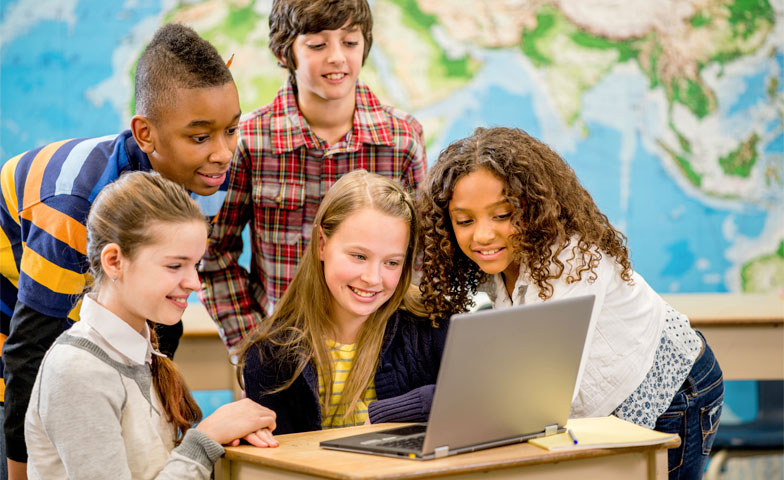Distance learning and classroom visits spark excitement learning social studies
Making social studies come alive is a top priority when trying to engage my middle schoolers. I began this process through distance learning. Using Skype in the classroom has enabled my students to travel to places that, as a school, we could not afford to travel to.
We have been able to see and experience things that not many people, especially the general public, get to experience. My students visited a private library that contained George Washington’s personal book collection. They were able to see Washington’s copy of the U.S. Constitution that was issued to him by Congress. On the pages of his copy, Washington made notes in the margin about what he felt it said about his role as President.
These distance learning events created memories that will last with my students for their entire lives. For many of my students, these events created a passion that has made them want to visit historical sites during spring or summer break.
In March, my students had the privilege of having a US Representative visit our classroom. US Representative Pat Tiberi shared his journey to become a congressman as well as what he does as a US Representative.
All the Skype sessions my students participated in had prepared them for this moment. They had learned how to engage a speaker, how to speak clearly when asking a question, and how to ask a follow-up question.
I also had my students spend at least 30 minutes actively researching topics to create their questions. Students wrote each question on the blank side of a notecard so after they asked their questions, they could use the other side of the card to take notes from the presenter’s response. This ensured that the students were engaged with the presenter throughout the session.
I also made it a priority that students not ask questions that a presenter already addressed. As such, the students had to pay attention to see if their question was addressed before the question and answer session began. When the students ask a question, they always stand, say “Hello, (presenter’s name)! My name is (blank), and my question is…”
I was so proud of how respectful, polite, and engaged my students were during the session with the congressman. Having an actual US representative in the classroom made our federal government so much more real. We had been studying the US Constitution, and we had even Skyped with the US Capitol regarding Article 1, but having an actual congressman in the room created an event unlike anything they had experienced before.
Using all of this information, the students had prepared questions they wanted to ask the congressman. The congressman presented information using kid-friendly language, and he created a great analogy about Congress when he compared the number of students in the room to the number of teachers in the room. He said that it was similar to the number of representatives in the House and the number of senators in the Senate. This created a perfect visual for the students.
He even had them vote on the idea of changing the driving age from 16 to 14. He did this to show how challenging it is to get certain legislation passed.
After the congressman shared his journey, he asked if the students had any questions. Almost 40 hands shot into the air. The students felt proud whenever the congressman complimented their question as a “really good question.”
The congressman took every student’s question and treated each question with the utmost respect. When the congressman left, he said something that makes every teacher stand a little taller, “Your students were great! They were so respectful.”
I couldn’t have been more proud, and I am looking forward to the next big moment in my students’ educational career. I know that they have been prepared to engage adults and communicate their ideas effectively. Now, who to have them engage with next…



